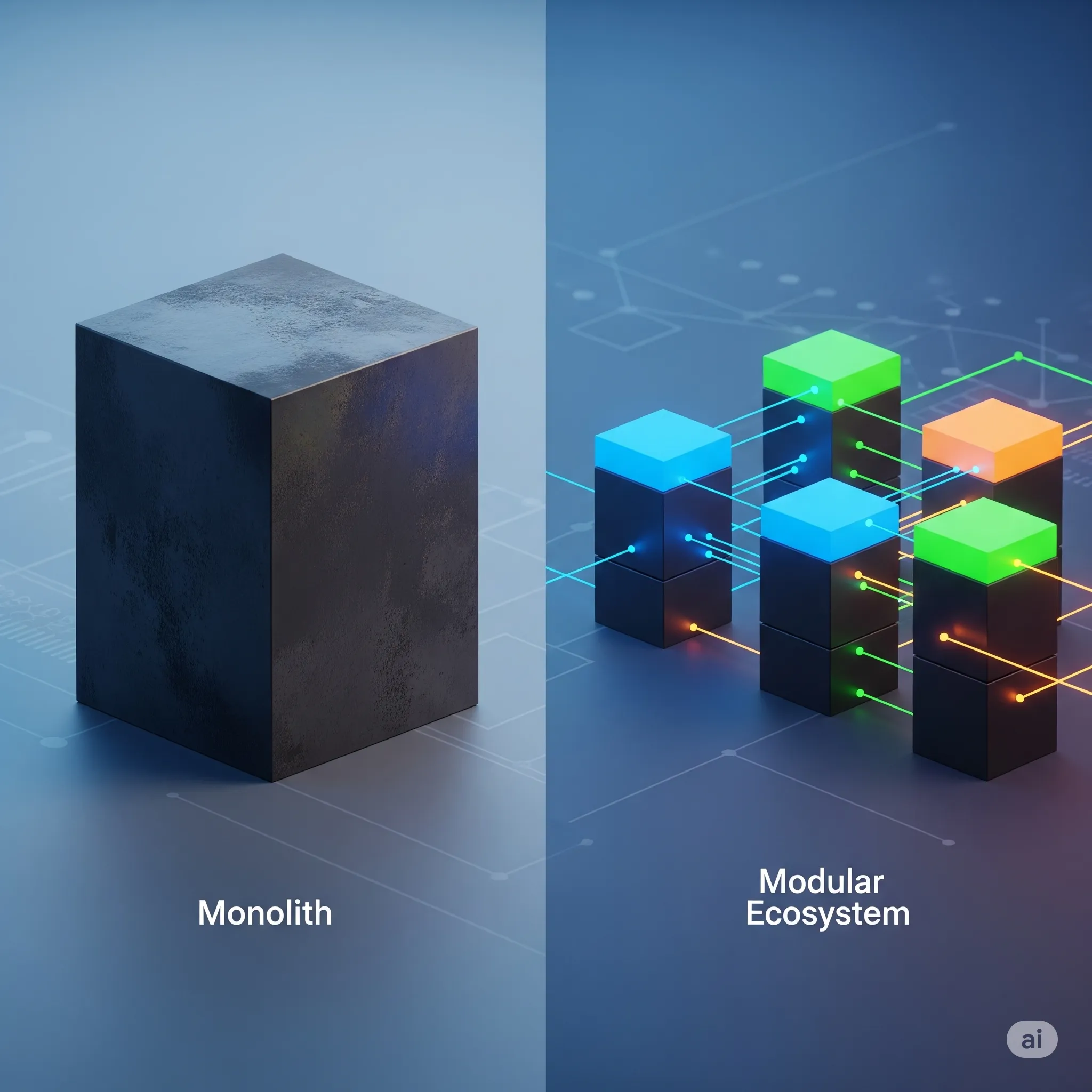The Myth of the Monolith The World is Already Modular
Published on: Mon Aug 05 2024 by Ivar Strand
The Myth of the Monolith: The World is Already Modular
In discussions surrounding public finance modernization, a persistent assumption is that the ideal end-state is a single, fully integrated, monolithic Financial Management Information System (FMIS). This pursuit of a singular “source of truth” has guided the design of many large-scale reform projects.
This assumption, however, is not supported by empirical evidence from advanced economies. A closer look at the data reveals that the monolithic system is the exception, not the rule. The de facto global standard among complex, mature governments is a more modular and interconnected digital ecosystem.
The Empirical Evidence from OECD Countries
A 2022 survey conducted by the OECD, and analyzed by the IMF’s PFM Blog in August 2024, provides a clear picture of the architectural diversity among its member states. The findings are a direct contradiction to the monolithic ideal.
The survey found that among OECD countries:
- Only 17% have a single, fully integrated system that covers all core PFM functions.
- The majority, 59%, use a “partially decentralized FMIS,” which combines a central platform with devolved features.
- A significant portion, 45%, explicitly use multiple, distinct IT systems connected by interfaces to exchange data.
(Note: Percentages sum to more than 100% as countries can employ mixed models).
The data is unambiguous. The prevailing practice in developed nations is not to force all government functions into one super-application, but to manage an ecosystem of interconnected systems.
https://blog-pfm.imf.org/en/pfmblog/2024/08/fmis-in-oecd-countries-a-study-in-diversity
https://one.oecd.org/document/GOV/SBO(2024)20/en/pdf
The Analytical Implication for Modern Reform
This evidence has a direct and significant implication for developing states charting their own modernization paths. The goal of reform should not be to chase the “myth of the monolith,” an architectural model that even the most advanced economies have largely moved beyond.
The reality is that mature governments require a level of specialization and flexibility that a single, rigid system cannot provide. The effective integration of diverse functions like health, procurement, payroll, and core treasury is better achieved through a modular, or federated, architecture. In this model, specialized systems are connected to a central hub via standardized, secure Application Programming Interfaces (APIs).
This approach, which aligns with the modern principles of Digital Public Infrastructure (DPI), is not a compromise. It is a more resilient, adaptable, and ultimately more manageable state of maturity. The evidence suggests that a modular ecosystem is the proven, sustainable model for governing a complex state in the digital age.



